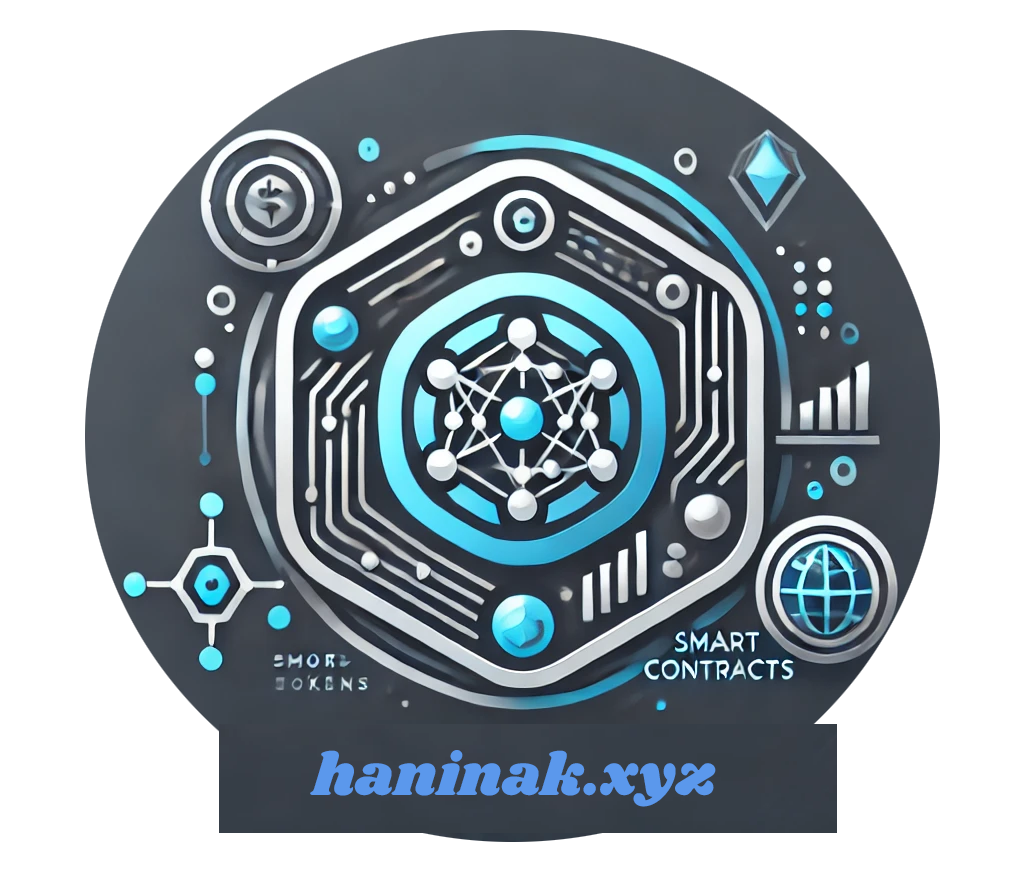How can an already deployed smart contract be updated or modified?
In the world of Blockchain and Ethereum, smart contracts are set to be unchangeable once they’re on the network. But, as technology grows and needs change, developers might need to update these contracts. This could be to make them better, fix problems, or add important new features. This article will look at how to update these contracts safely and keep the Blockchain secure.
Smart Contracts Technology is key for apps built on Blockchain like Ethereum. These contracts can handle transactions and follow rules on their own. Even though they can’t be changed, this makes Blockchain systems secure and clear. But, it can be hard when changes are needed.
This article will dive into the challenges of updating smart contracts. We’ll look at the Proxy Pattern, a common way to make changes without affecting users. We’ll also talk about the OpenZeppelin Upgrades Plugin, a tool that makes updating contracts easier.
Understanding Smart Contract Immutability and Upgrade Challenges
Blockchain’s core principle of immutability makes upgrading or modifying smart contracts hard. Decentralized Applications (DApps) need updates to add new features, fix bugs, or improve performance. But, changing contracts must be done carefully to keep the blockchain safe and protect user assets.
Blockchain’s Principle of Immutability
The immutability of blockchain technology is key to keeping data and transactions safe. But, it also makes upgrading smart contracts tough. Once a smart contract is deployed, its code can’t be changed. This is good for trust and transparency but limits flexibility and security updates.
Common Upgrade Requirements in DApps
Decentralized applications often need updates to their smart contracts. Some common needs include:
- Adding new features to enhance user experience or functionality
- Fixing bugs or vulnerabilities to improve security and reliability
- Optimizing contract performance to increase efficiency and scalability
Security Implications of Contract Modifications
Changing smart contracts can be risky. Hackers often target smart contracts because of their high transaction volumes and potential vulnerabilities. The Wormhole Cross Chain Bridge Attack in February 2022 caused around $320 million in losses for Solana and Ethereum. The DODO DEX hack in March 2022 resulted in about $3.8 million in cryptocurrency losses.
Upgrading smart contracts can bring new risks. Changes to the contract’s logic or storage layout could harm the entire decentralized ecosystem. It’s vital to audit, test, and use secure upgrade mechanisms to protect user assets.

Smart Contracts Technology: Proxy Pattern Implementation
Cryptography, Oracles, and Tokenization are key parts of smart contract tech. They make transactions secure, decentralized, and programmable. The proxy pattern is a common way to update smart contracts. It uses a proxy contract to call an implementation contract, letting developers change the logic without changing the contract’s address.
The proxy pattern helps solve the problem of the blockchain’s principle of immutability. It separates the proxy contract (for storage) and the implementation contract (for business logic). This way, updates can be made while keeping the contract’s address and storage unchanged.
The simple (delegate) upgradable proxy smart contracts use delegate calls for updates. This ensures that calls go to the implementation contract. It lets developers change the contract’s functionality without changing its address.
Initializers in proxy smart patterns help set up the state after deployment. They make sure the logic in the implementation contract is correct and secure. But, the simple delegate proxy pattern has its challenges, like storage and function selector collisions. These need careful management to avoid security issues.
To solve these problems, solutions like the Transparent Proxy Pattern, UUPS Pattern, and Beacon Proxy Pattern were created. Frameworks like OpenZeppelin developed these advanced proxy patterns. They handle storage and function selector issues, making smart contract upgrades secure and smooth.

The use of the proxy pattern in smart contracts shows the industry’s effort to overcome immutability challenges. It helps decentralized applications (DApps) powered by Cryptography, Oracles, and Tokenization evolve.
OpenZeppelin Upgrades Plugin Framework
The OpenZeppelin Upgrades Plugin Framework makes it easier to work with Ethereum smart contracts. It’s written in Solidity. This tool helps developers build Decentralized Applications (DApps) that can grow and change over time.
Setting Up the Development Environment
To start with the OpenZeppelin Upgrades Plugin Framework, you need to set up your workspace. You’ll have to install the right tools and configure Hardhat to work with the plugin.
Installing and Configuring Required Dependencies
For the OpenZeppelin Upgrades Plugin Framework, you need to install some dependencies. These include the OpenZeppelin Contracts library and the Hardhat environment. Make sure these are installed and set up correctly for a smooth development process.
Implementation Contract Deployment Process
The heart of the OpenZeppelin Upgrades Plugin Framework is how it deploys upgradeable smart contracts. You can use the deployProxy function to create an upgradeable contract instance. This lets you make changes to the contract’s logic later without affecting the current deployment.
| Feature | Description |
|---|---|
| Upgradeable Contracts | The OpenZeppelin Upgrades Plugin Framework enables the deployment of upgradeable smart contracts, allowing developers to update the contract’s logic without affecting the existing deployment. |
| Proxy Pattern | The framework utilizes the Proxy pattern, where a proxy contract delegates calls to an implementation contract. This design pattern facilitates the upgradability of smart contracts. |
| Hardhat Integration | The OpenZeppelin Upgrades Plugin seamlessly integrates with the Hardhat development environment, providing developers with a comprehensive set of tools for managing upgradeable contracts. |
Using the OpenZeppelin Upgrades Plugin Framework makes it easier to create, deploy, and manage upgradeable smart contracts for yourEthereum-basedDecentralized Applications.
Deploying Upgradeable Contracts Using deployProxy
In the world of Ethereum-based Smart Contracts Technology, updating and modifying contracts is key. The deployProxy function makes this easy for developers. It helps deploy contracts that can be updated later.
The deployProxy function is part of the OpenZeppelin Upgrades Plugin. It’s a popular tool for managing contract upgrades. It simplifies deployment by handling three main steps: deploying the implementation contract, the proxy contract, and running the initializer function.
To use the deployProxy function, developers need a deployment script. This script uses the OpenZeppelin Upgrades Plugin. It outlines how to deploy the contract, including the implementation and proxy contracts.
After the script is ready, developers can deploy the contract using the Hardhat run command. This command runs the deployment script, creating the upgradeable contract. Once deployed, developers can use the Hardhat console to interact with it. They can access the proxy contract and its functions.
The deployProxy function is a powerful tool in the Ethereum Blockchain world. It lets developers create smart contracts that can grow and change. This way, teams working with Ethereum-based Smart Contracts Technology can keep their apps flexible and meet user needs.
Contract Version Management and State Preservation
Managing contract versions and keeping the state intact is key for Distributed Ledgers, Consensus Mechanisms, and Cryptography in smart contracts. Developers must keep the contract’s storage layout in order. This ensures data stays safe and correct during upgrades.
Maintaining Contract Storage Layout
Developers need to keep the contract’s state variable structure the same during upgrades. Changing this layout can cause data issues. It’s important to plan and document the storage layout well to keep the application’s state safe.
Handling Contract Variables During Upgrades
When upgrading a smart contract, developers must think about the state variables. They might need to move data from the old to the new contract. Or they might need to manage the transition carefully to avoid losing or corrupting data. Good versioning and data migration strategies are key to keeping the app working well.
Version Control Best Practices
To manage contract versions well, follow best practices for version control. Document changes thoroughly, test upgrades well, and use tools like Git for code management. These steps help ensure a smooth and secure upgrade process, reducing the chance of problems or data loss for users.
| Feature | Kaleido |
|---|---|
| Smart Contract Management | Kaleido offers a top-notch smart contract management solution. It includes contract verification, auditing, and deployment automation. |
| Integration with Source Control | Kaleido works well with existing source code management tools, like GitHub. This makes contract version control and deployment easy. |
| Automated Compilation and Deployment | Kaleido’s smart contract compiler service can automatically compile code from a GitHub repository. This makes deployment simpler. |
| Shared Contract Registry | When a contract is moved to a new environment with Kaleido, it goes into a shared smart contract registry. This makes it accessible to everyone. |
| Transaction Monitoring | Kaleido’s transaction analyzer creates signatures for verified contract versions. This helps in monitoring and analyzing contract execution better. |
| Security Scanning | Kaleido works with MythX, a top smart contract security scanning service. This helps find and fix vulnerabilities in the Ethereum ecosystem. |
Implementing Contract Logic Updates with upgradeProxy
Updating a smart contract’s logic is key for keeping decentralized apps (dApps) running smoothly. The upgradeProxy function lets developers change a contract’s code without losing its data or address. This way, new features can be added or old ones updated without affecting users.
The upgradeProxy function creates a new contract version and changes the proxy to use it. This keeps the contract’s data and address the same, making updates easy and seamless.
- Create an upgrade script that outlines the changes needed for the contract.
- Run the upgrade script with Hardhat to deploy the new contract version.
- The upgradeProxy function then updates the proxy to use the new contract, ensuring a smooth transition.
This method is vital for keeping Oracles, Tokenization, and Smart Contracts Technology in decentralized systems running well. With upgradeProxy, developers can meet new needs, fix issues, and improve their dApps without breaking blockchain rules.
The upgradeProxy function is a valuable tool for blockchain developers. It helps them make their dApps better and more secure. By using it, developers can keep their projects up-to-date and meet user needs, helping blockchain grow and get more popular.
Conclusion
Updating smart contracts on the Blockchain, especially on Ethereum, has shown us a lot. Using the proxy pattern and tools like the OpenZeppelin Upgrades Plugin Framework helps a lot. This makes it easier to improve Decentralized Applications (DApps).
Understanding how Blockchain works and the risks of changing contracts is key. Developers must follow best practices to keep their smart contracts safe. This includes good version control, keeping storage layouts the same, and updating variables carefully.
As Blockchain and smart contracts grow, being able to update them will become more critical. By using these upgrade methods, developers can make Ethereum-based DApps better. This helps them stay up-to-date, secure, and meet the changing needs of the Blockchain world.







